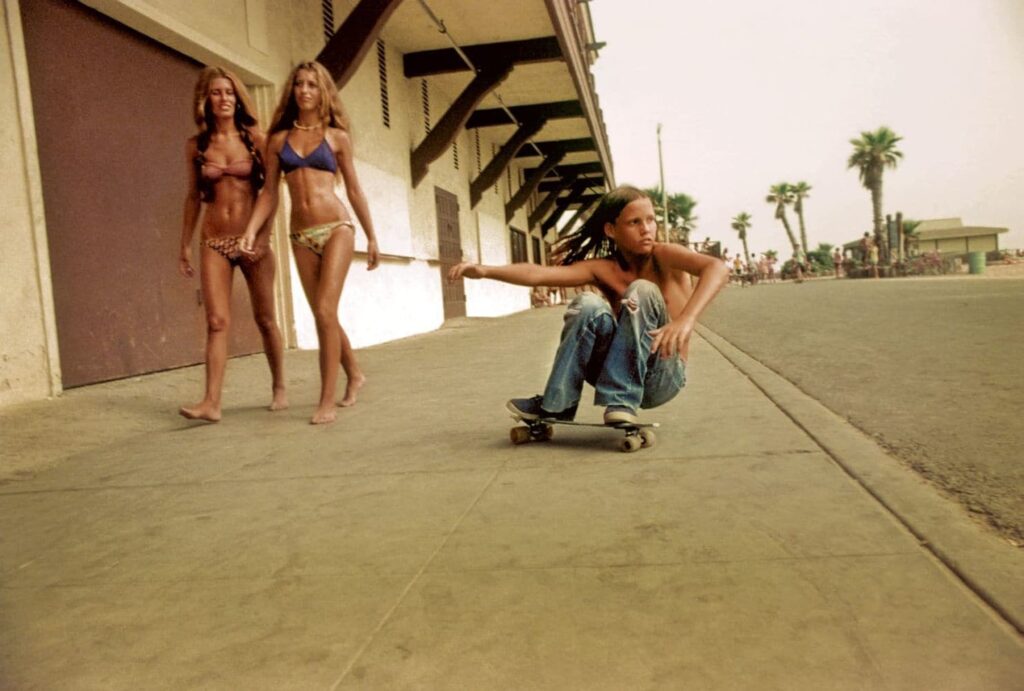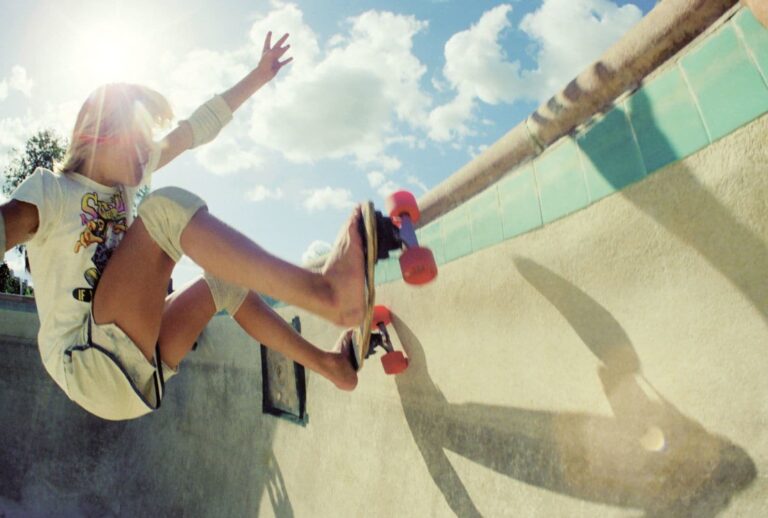The mid-1970s in California was a time of severe drought. The economy wasn’t in great shape either and gas shortages meant hours-long lines outside stations just to fill your tank. The summers were hot in Los Angeles and there wasn’t a lot for a kid to do. This combination of factors led to a good number of houses in the suburbs left vacant and backyard swimming pools unfilled. It was from these humble beginnings that the golden age skate culture was born. The legendary Dogtown and Z-Boys and countless other kids made the Southern California suburbs, bone-dry city drainage ditches and beach towns the focal point for new form of fearless athletic expression.
Luckily, those early days of skate culture were captured by a young photographer named Hugh Holland who first encountered a group of skateboarders carving up the hills of Laurel Canyon Boulevard in Los Angeles in 1975.
While not a skateboarder himself, Holland photographed his subjects for three full years and in 2012, released a collection of his photos titled, Hugh Holland: Locals Only : California Skateboarding 1975-1978.
Here is a selection of photos from Hugh’s extensive collection. You can find more from Hugh at: hughholland.com | Amazon | Facebook
Before Skateparks, There Were Empty Swimming Pools – Golden Age of Skate Culture
In an effort to conserve water during the drought of 1976-77, swimming pools were being emptied throughout Southern California. Legendary skaters like Steve Alba, Steve Olson and Jay Adams were finding empty pools, jumping fences, cleaning the pools out to skate in and using them until the police showed up.
In an interview with Vice in 2015, Holland explained how he achieved the glowing, sunset look of the photos. “I wasn’t abled to shoot earlier in the day.” Holland says. “There was also more smog in LA then which gave their yellowish, orangey cast. It was a great time.”

According the Holland, he was accepted into the group immediately for very practical reasons. He told Vice, “They welcomed me immediately because I was the only one around with a camera. They had these new wheels then from Europe which gave them traction on the vertical, so everyone had new things they wanted to show off. They started in drainage ditches up in the hills. Then it didn’t take long before they discovered empty swimming pools. And since i had a car, which most of them didn’t, I was in.”
Organized skateboarding contests began to take shape around 1975-76. The tricks then were fairly simple compared to the acrobatics that take place today.
The biggest competition since the 1960s took place in Del Mar, CA which was said to have about 500 competitors. The contest lasted two days and was sponsored by Bahne Skateboards & Cadillac Wheels. The event was won by freestyle skating legend Russ Howell.
The first two official skateparks opened in March, 1976 just one week apart. Skateboard City in Port Orange Florida and Carlsbad Skatepark in California were the first of what would be 200 parks to open across the U.S. by 1982.
What started out as a way to pass the time for kids is now a multi-billion dollar market. It’s estimated that the skateboarding industry represents an estimated $4.8 billion. For the first time, skateboarding will be featured as an official sport at the 2020 Olympics in Tokyo.










